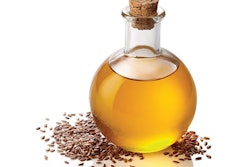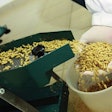
Prevention of this condition should be top of mind for nutritionists
Rumen acidosis (low pH) is not a disease. So, calling the vet is already too late as you can only save the affected animal. Prevention is possible and should be the No. 1 issue in the minds of nutritionists engaged in intensive and super-intensive feedlot beef cattle operations.
Rumen acidosis is a metabolic disorder caused by excess acids being produced too rapidly by rumen microbiota. It is intensified when starch-rich ingredients are fed, as is the case with the above production schemes that require high-energy rations. Of course, there are other causes for this disorder, but the vast majority of cases is because of rapid starch fermentation.
The most commonly used method of preventing acidosis in rapidly growing beef cattle is to include sodium bicarbonate, a well-known buffer for acids. This ingredient prevents rumen pH to drop below unacceptable levels and thus it can prevent acidosis. There is no “standard” inclusion rate as it all depends on how much buffering capacity the ration in question requires. In most cases, and because this ingredient is not that expensive, over-supplementation is the rule, but that does not make it always right.
Sodium bicarbonate is needed for the “bicarbonate” part. Thus, the ingested sodium is often in huge excess of actual requirements, and it needs to be excreted – something that affects water requirements as well. To this end, it is best to use not a single buffer ingredient but rather a combination of them. Some will be more expensive, but the result will be that less total “buffer” will be needed, while avoiding overloading the animal with unwanted minerals. In fact, there are even some organic raw materials that can reduce the inclination towards acidosis.
Thus, in order to not have to call your vet, it is best to have already visited with your nutritionist to ensure your fast-growing beef cattle receive the proper “buffer” nutritional package. As always, prevention costs less than therapy, when one takes into account lost growth performance potential.

















